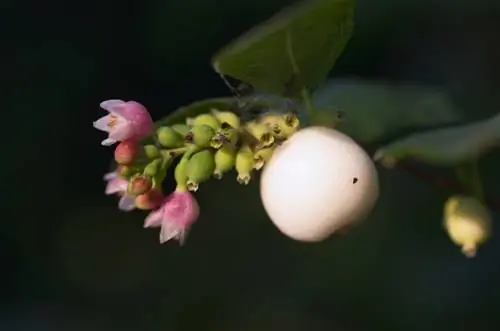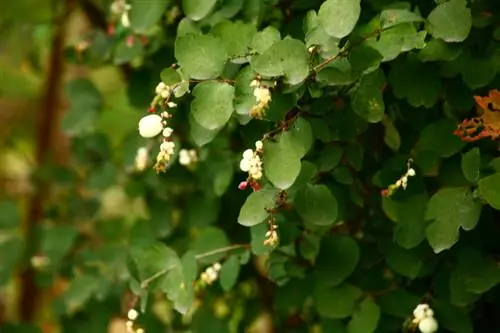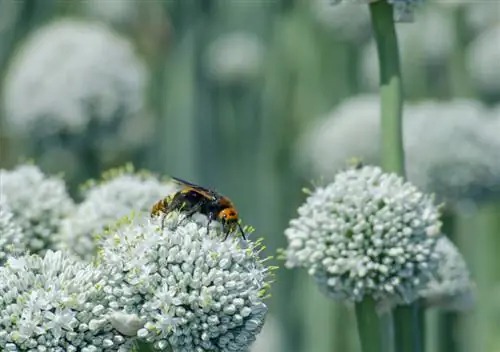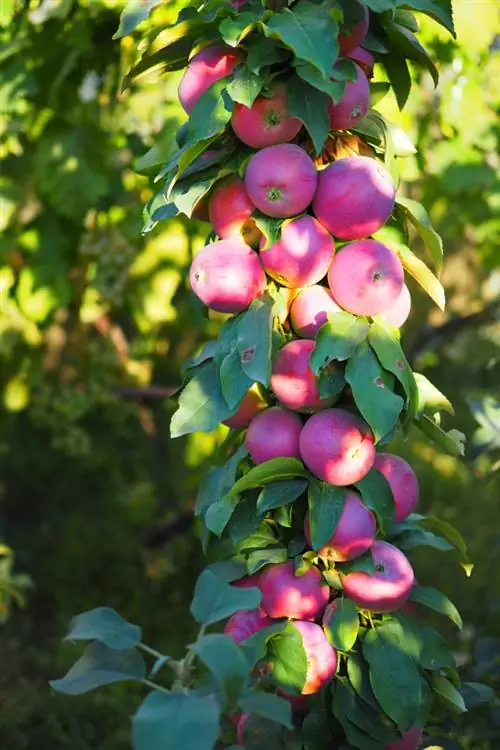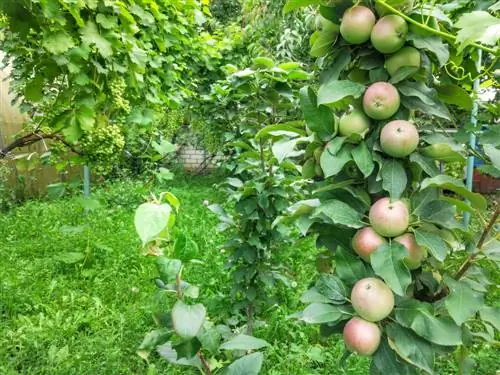- Author admin [email protected].
- Public 2023-12-16 16:46.
- Last modified 2025-06-01 06:02.
The snowberry or snap pea is one of the ornamental shrubs that thrive in almost every garden. The bushes are often found growing wild on the edges of forests. In the garden they are suitable for bird hedges or as individual plants under trees or in shady locations.
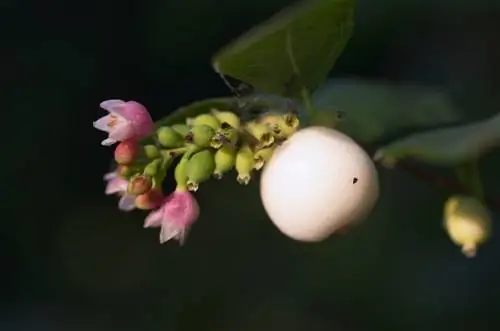
What is a snowberry or cracking pea?
Snowberry profile (Symphoricarpos albus): The snap pea is a hardy, deciduous ornamental shrub with a growth height of 30 to 200 cm. The white, red or pink berries appear from May to September and are slightly poisonous. Snowberries are robust, easy to care for and disease resistant.
The snowberry or snap pea: A profile
- Botanical name: Symphoricarpos albus
- Popular names: snap pea, snap pea bush, crackberry
- Family: Honeysuckle family (Caprifoliaceae)
- Origin: North America, now native to Europe
- Distribution: Europe, except southern Europe, especially Great Britain and Germany
- Varieties: numerous breedings
- Height: 30 to 200 centimeters, some varieties up to 300 centimeters
- Width: 150 to 180 centimeters
- Leaves: green, entire, 4 - 6 centimeters long, yellowish autumn color
- Flowers: bell-shaped individual flowers, up to 6 mm long, white-pink
- Fruits: mostly white, occasionally pink or red round berries
- Flowering period: Continuously from May to September
- Ripening period: from summer to winter
- Propagation: creeping shoots, seeds, cuttings
- Use as: single shrub, hedge, underplanting trees
- Poisonous: The berries are slightly poisonous
- Winter hardiness: absolutely hardy, deciduous
- Special feature: ecologically valuable (birds, bees)
Robust, easy to care for and disease resistant
Snowberries don't need a lot of sun, nor do the soil have to be very nutritious. Care is also limited. Fertilizing and watering is only necessary for freshly planted snowberries. Older plants can do without any care.
Occasional trimming is used to shape the fast-growing shrub.
Snowberries are very rarely affected by diseases. Aphids can actually become a problem. However, they can be combated quite well with lye made from soft soap, nettle broth or tansy tea.
Snowberries tend to overgrow
Snowberries spread through the garden quite quickly via the underground sprouts, especially if the soil is very dry.
So that the snap pea doesn't grow too much, you should remove the creeping sprouts regularly.
Popular varieties of snowberries
- Common snowberry (Symphoricarpos albus laevigatus): White berries
- Coral berry (Symphoricarpos orbiculatus): Red berries
- Low purpleberry (Symphoricarpos chenaultii): White and red berries
- Pink snowberry (Symphoricarpos doorenbossii): Pink to purple berries
Tip
The snap pea has only been planted in Europe since the 19th century, but it quickly became established here. The berries were previously used as an emetic and laxative. However, this is not recommended due to its toxicity.

